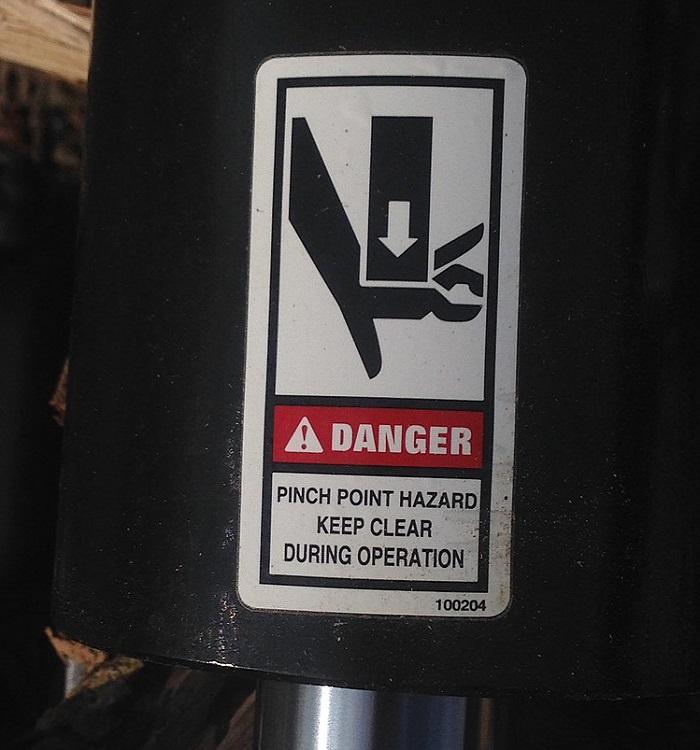Pinch points are areas on machinery and equipment where fingers and other body parts can be caught, crushed, or pinched. Pinch point hazards are places where your body parts can get stuck or hurt. It’s different from a ‘bottleneck,’ which is a problem in a system. Pinch points can happen when two things are moving or one thing is moving and one thing is not. They can hurt your fingers, hands, feet, or legs. Even though it might not look serious, a pinch can make you really hurt and sometimes it can even break bones or make you lose a body part. Pinch points can happen in many places, like getting trapped between two moving things or getting squished against a wall. It’s hard to know where these dangers are, but we can look at examples to help us know what to watch out for in our workplaces. These hazards are common in many workplaces and can lead to serious injuries or death. Employers and employees need to be aware of pinch points and take the necessary steps to avoid them.
- Recognize Pinch Points: Pinch points are areas on a machine or equipment where two moving parts come together or where a moving part and a stationary part come into contact. These areas can cause serious injury or even death if a body part is caught between them. It is important to recognize these areas and take the necessary precautions to avoid accidents.
- Train Employees: Training employees on the dangers of pinch points and how to avoid them is crucial. This includes educating them on the location of pinch points on the equipment they work with, as well as proper procedures for operating and maintaining the equipment. Additionally, providing employees with the proper personal protective equipment, such as gloves and safety goggles, can help further protect them from potential hazards.
- Regular Maintenance: Regular maintenance is crucial in identifying and fixing potential pinch point hazards. This includes inspecting equipment for wear and tear, and replacing any damaged or worn parts. Additionally, it is important to ensure that guards and safety devices are properly installed and functioning to protect employees from potential hazards.
- Implement Safety Procedures: Implementing safety procedures such as lockout/tagout procedures can ensure that equipment is properly shut off and secured before maintenance or repairs are performed. This helps to prevent accidental activation of machinery, and helps to ensure that employees are not inadvertently put in harm’s way.
- Post Warning Signs: Clearly posting warning signs in areas where pinch points are located can help remind employees of the potential hazards and to take the necessary precautions. It is also important to ensure that these signs are easily visible and that the language used is easily understood by all employees.
- Conduct Regular Safety Audits: Regular safety audits can help identify and address potential pinch point hazards. This includes inspecting equipment, evaluating employee training and procedures, and identifying areas where improvement is needed.
- Update equipment: Updating equipment can help to eliminate pinch point hazards or mitigate the risk associated with them. This includes replacing old equipment with newer models that are designed with safety in mind, or retrofitting existing equipment with guards or other safety devices.
- Invest in Automation: Investing in automation can help to eliminate pinch points hazards, by reducing the need for manual labor and thus reducing the risk of injury. Additionally, automation can increase productivity and efficiency, making the workplace safer and more efficient overall.
Pinch point hazards are a serious risk in many workplaces, but they can be effectively controlled and eliminated through proper identification, training, and maintenance. Employers and employees should work together to ensure that pinch points are identified and eliminated, and that safe work practices are followed to prevent injuries. Being aware of pinch points and taking the necessary steps to avoid them can help keep workers safe and prevent serious injuries.
Image Reference: https://commons.wikimedia.org/wiki/File:Danger_Pinch_Point_Hazard_sign.jpg










